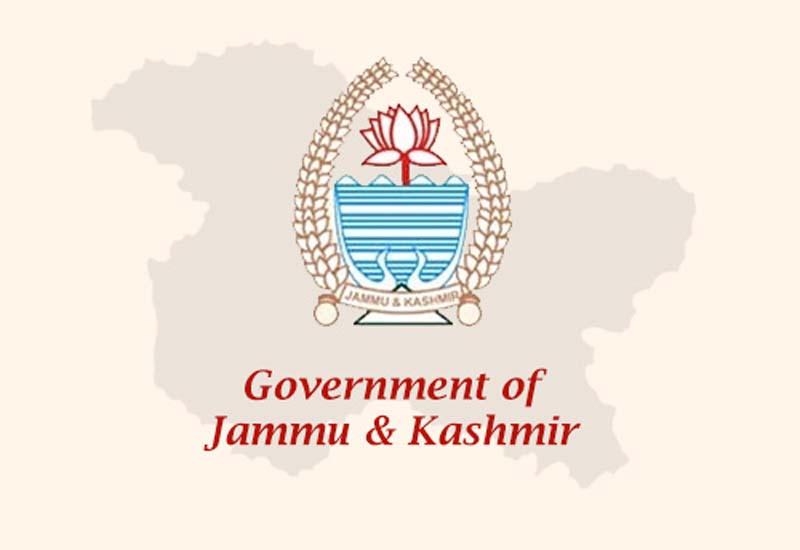Revamp of own resources imperative to meet challenges of urban infra
*Benchmarks fixed to incentivize Municipal Bodies
Mohinder Verma
JAMMU, Dec 2: In order to facilitate Urban Local Bodies (ULBs) across the Union Territory of Jammu and Kashmir in revamping their revenues and stepping up spending to meet the colossal challenge of providing urban infrastructure services, the Government has chalked out multi-pronged strategy and even created Urban Reform Incentive Fund for incentivizing the adoption of reforms by Municipal Corporations, Municipal Councils and Municipal Committees.
The Urban Local Bodies also known as local Governments constitute a critical tier in three-level governance system and they are expected to meet out the demand for affordable housing, integrated transport system, basic infrastructure like water, electricity supply, schools, hospitals and law and order.
There are 78 Urban Local Bodies in the UT of J&K which includes 2 Municipal Corporations and 19 Municipal Councils having urban population nearly 34.33 lakh. These Municipal Bodies have status of local self Government with well defined powers and functions. However, economic condition of ULBs is not strong due to poor resource base and only few institutions have been able to generate revenue out of limited infrastructure/sources such as shopping complex, building permissions, license fee etc.
Apart from own resources/Grant-In-Aid (GIA), the Urban Local Bodies receive funds under plan as well as under Centrally Sponsored Schemes.
As per the official document, the Srinagar Municipal Corporation, Jammu Municipal Corporation, Urban Local Bodies Kashmir and Urban Local Bodies Jammu mobilized own resources to the tune of Rs 9393.76 lakh in 2019-20 financial year. However, the own resources by these Urban Local Bodies reduced to Rs 8179.89 lakh in 2020-21 but in 2021-22 the same increased to Rs 11495.41 lakh.
The GIA devolution to ULBs in 2019-20 was to the tune of Rs 58669.62 lakh while as the same increased to Rs 86020.22 lakh in 2020-21 and was to the tune of Rs 76373.08 lakh in 2021-22. Likewise, the CAPEX assistance was to the tune of Rs 7974.39 lakh in 2019-20, Rs 10251.47 lakh in 2020-21 and Rs 65166 lakh in 2021-22. Similarly, the assistance under Centrally Sponsored Schemes was to the tune of Rs 21600.92 lakh in 2019-20, Rs 1430.62 lakh in 2020-21 and Rs 4990.20 lakh in 2021-22.
During the year 2021-22, an amount of Rs 146529.28 lakh was provided by the Central/UT Governments but ULBs own resources mobilized were only Rs 11495.41 lakh as such the grants provided by the Union Government and UT Government were more than income mobilized by the ULBs for meeting out their expenditure needs.
In order to improve financial health of ULBs, Municipal Acts have given adequate powers to ULBs to impose taxes, levy fees, user charges etc but ULBs have not paid much and required attention towards these aspects, official sources said.
Stating that investment requirements of urban infrastructure services in UT of J&K are colossal and huge investment is required for urban infrastructure development in all the 78 ULBs, they said, “the fiscal resource of this magnitude cannot be easily mobilized from within the budgetary resources of ULBs as such it becomes imperative for the ULBs to revamp their revenues and step-up their spending in order to meet with the challenge of providing urban infrastructure services”.
They stressed that ULBs need to be less dependent upon the fund flows from upper tiers of Government in the form of grants and they need to mobilize adequate funds from their own sources to meet the service provision objectives. “Most of the ULBs use grants to finance their activities, while the other sources of revenue are not tapped to the potential that exists”, they added.
Now, the Government has chalked out a strategy to improve the financial health of the Urban Local Bodies, which have been asked to tap both conventional and non-conventional sources to their potential for financing infrastructure projects; avail Public Debt from market – both institutional and retail investors to finance the creation of urban infrastructure; impose Property Tax, improve betterment charges, land use conversion tax, purchasable development rights / actionable rights, land transfer tax and vacant land tax to enhance the revenue generation.
The ULBs have further been suggested to pay required attention towards periodic enhancement of fees and user charges like empanelment and registration charges, licensing fees, fees for grant of permit, fees for certificates, development charges, regulation fees and penalties/fines, taxes like vehicle tax, professional tax, advertisement tax, octoroi/toll/entry tax etc to such levels that they contribute adequately to the resource base of ULBs.
“The collections of receipts need to be accelerated by better financial management especially creating awareness regarding payment of taxes/rent etc and Municipalities can also enhance their financial strength by creating more revenue generating assets”, sources said.
They disclosed that Government of Union Territory of J&K has also created Urban Reform Incentive Fund for incentivizing the adoption of reforms by Municipal Corporations, Municipal Councils and Municipal Committees.
The UT of J&K has earmarked Rs 200 crore during the current Financial Year under the scheme City Sustainable and Infrastructure Development for incentivizing the adoption of Municipal Reforms by ULBs. A total of 50% of the ULBs’ allocation will be permitted to be released as incentive on the signing of MoU by the H&UDD and Heads of the ULBs for the agreed reforms and balance 50% on achievement of prescribed milestones for the current financial year and beyond.
“Releases for the current financial year onwards would be dependent upon the achievement of milestone(s) for that year for each agreed reform area separately. The Housing and Urban Development Department has devised the benchmarks/ milestones to incentivize the ULBs through the Corpus available for the current Financial Year and beyond based on population and resource generation of the ULBs”, they said.


